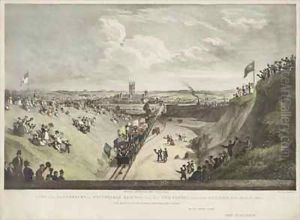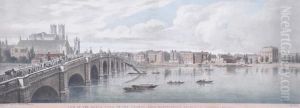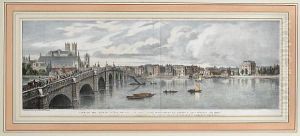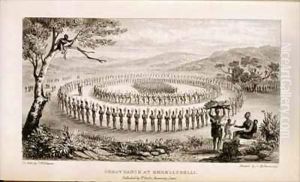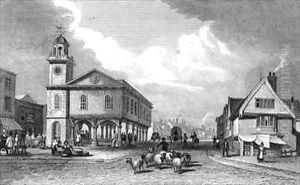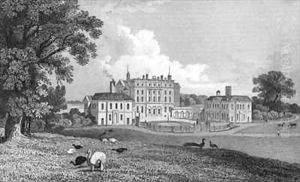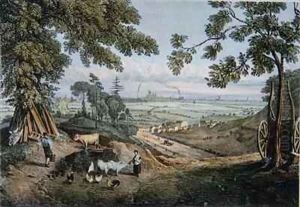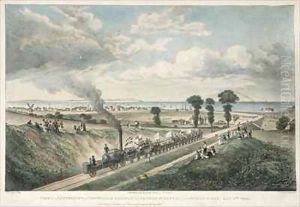Thomas Mann Baynes Paintings
Thomas Mann Baynes was a British artist known for his detailed drawings and watercolors of landscapes, buildings, and outdoor scenes. Born in 1794, Baynes was part of the Victorian era of art and culture. He was particularly recognized for his architectural works and his ability to capture the essence of urban and rural landscapes of his time.
Baynes's skills were largely self-taught, although he likely received some artistic guidance from his father, who was also an artist. Throughout his career, Baynes contributed to various publications, including illustrating for books and periodicals. His works were often used to complement the writings of travel authors, providing a visual representation of the locations being described.
One of his notable contributions was to the publication 'Picturesque Views of the Diamond Rock,' which included several illustrations by Baynes. He also produced a number of works depicting scenes from the city of London, capturing the bustling city life with its historical buildings and the Thames River.
Although not as widely known as some of his contemporaries, Baynes left behind a significant body of work that provides a window into the 19th-century British landscape. His attention to detail and the historical value of his subjects have made his works important to historians and collectors.
Thomas Mann Baynes continued to work and exhibit his art until his death in 1876. His legacy lives on through his contributions to the visual documentation of the Victorian era, and his works can be found in various art collections and museums.
